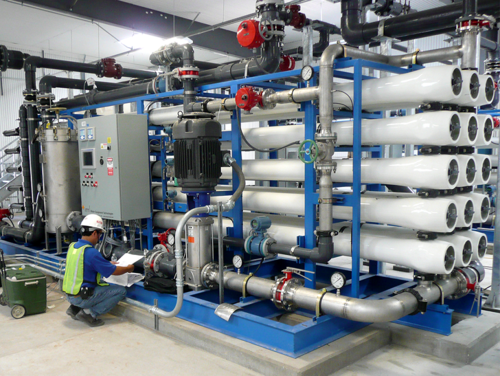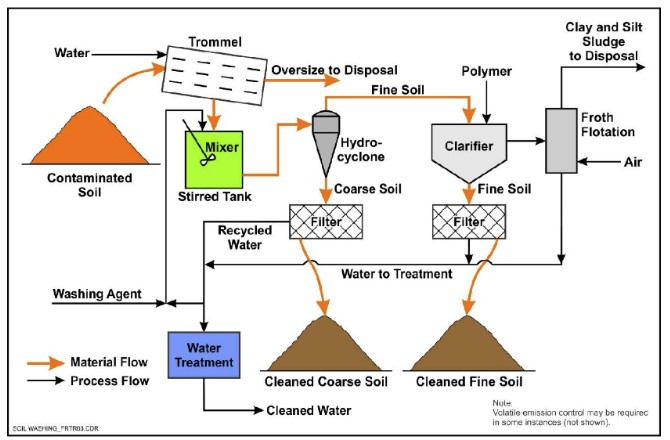How PFAS Treatment Makes Certain Tidy and Sustainable Water
The visibility of PFAS, frequently referred to as "forever chemicals," positions considerable obstacles to water quality and public health and wellness. Advanced treatment modern technologies, consisting of triggered carbon adsorption and membrane filtering, have actually emerged as reliable solutions to minimize these pollutants. By employing these techniques, neighborhoods can not only accomplish cleaner water however also foster sustainable techniques that protect ecological communities. Nonetheless, the effects of these therapies expand beyond immediate health and wellness advantages; they raise important concerns about lasting water monitoring methods that need to be resolved to ensure a durable future. What does this mean for our approach to water sustainability?

Recognizing PFAS Contamination
PFAS, or per- and polyfluoroalkyl substances, have become a considerable environmental issue as a result of their extensive frequency and perseverance in the atmosphere. These artificial chemicals have been made use of in various commercial applications and consumer items, consisting of non-stick cooking equipment, water resistant clothing, and food packaging, because of their distinct properties such as water and grease resistance.
The contamination of dirt and water resources by PFAS takes place primarily through commercial discharges, firefighting foam use, and seeping from land fills. pfas management. As soon as launched, these materials are immune to deterioration, causing their build-up in the atmosphere. This persistence raises crucial issues, as PFAS can take a trip fars away via groundwater and surface area water systems, affecting drinking water products and ecological communities

Health Risks of PFAS
The determination of PFAS in the atmosphere increases considerable health concerns for individuals revealed to these materials. Recognized as "permanently chemicals," PFAS do not break down easily and can accumulate in bodies with time. Study has linked PFAS direct exposure to various adverse health results, consisting of immune system disorder, liver damages, and enhanced risk of particular cancers cells - pfas management. Significantly, studies have actually revealed elevated cholesterol degrees and prospective influence on reproductive and developing health and wellness, especially in pregnant people and infants.
The ubiquity of PFAS in consumer products, such as non-stick cooking equipment, water-repellent fabrics, and food packaging, further magnifies the threat of direct exposure. Consuming alcohol water contaminated with PFAS is a substantial worry, as these chemicals can leach right into groundwater sources. Prone populaces, including youngsters and those living near industrial sites, might encounter elevated threats due to their establishing systems and potential for higher direct exposure degrees.
As awareness of these health and wellness threats remains to grow, governing agencies are beginning to establish standards for PFAS degrees in drinking water. Public health and wellness initiatives are necessary to mitigate exposure and safeguard areas from the lasting effects of these harmful materials.

Innovative Therapy Technologies
Exactly how can we effectively take on the challenges presented by PFAS contamination in water sources? Cutting-edge treatment modern technologies are emerging as crucial options in the quest for clean water. check out this site These methods concentrate on the elimination or devastation of per- and polyfluoroalkyl substances (PFAS), which are well-known for their persistence in the atmosphere.
One encouraging approach is adsorption utilizing innovative materials, such as triggered carbon and ion exchange materials. These materials have revealed efficiency in capturing PFAS particles from water. Another significant modern technology is membrane filtration, which uses nanofiltration and turn around osmosis to different contaminants at the molecular level, therefore giving a barrier against PFAS.
Furthermore, progressed moved here oxidation procedures (AOPs) use strong oxidants to break down PFAS substances right into safe results. This method is particularly efficient for treating extremely infected water resources. Bioremediation strategies, using specific microorganisms, are additionally being explored to break down PFAS.
As research proceeds, hybrid systems that combine multiple innovations may use improved performance, attending to the intricacies of PFAS contamination. The advancement and application of these ingenious treatment innovations are necessary steps towards guaranteeing the security and sustainability of our water sources.
Benefits of Reliable PFAS Treatment
Properly treating PFAS contamination in water resources considerably enhances public wellness and ecological safety. PFAS, often described as "permanently chemicals," are immune to deterioration and can accumulate in the human body, leading to significant health and wellness risks such as cancer cells, liver damage, and body immune system dysfunction. By implementing efficient treatment approaches, communities can lower direct exposure to these hazardous materials, eventually improving the health and wellness results of their populaces.
Furthermore, effective PFAS treatment adds to the preservation of regional communities. Infected water can adversely influence aquatic life and interrupt the fragile balance of neighborhood habitats. By making sure tidy water, treatment procedures protect biodiversity and preserve eco-friendly integrity.
Furthermore, official statement reliable PFAS remediation can foster public self-confidence in water top quality. When communities are guaranteed that their drinking water is complimentary from damaging impurities, it advertises a feeling of safety and health. This depend on is necessary for area involvement and support for continuous water administration initiatives.
Future of Water Sustainability
Amidst expanding issues regarding water top quality and scarcity, the future of water sustainability rests on innovative techniques and collaborative initiatives. As communities deal with the impending dangers of pollutants like PFAS, the growth of advanced treatment innovations is important. These innovations not just concentrate on the elimination of damaging compounds but also promote the reuse and recycling of water, consequently reducing general demand.
Furthermore, reliable water administration plays a critical duty in making certain lasting methods. Policymakers should integrate scientific research study with regulative frameworks to develop clear standards for water use and therapy. Stakeholder engagement, including neighborhood areas and sectors, cultivates a feeling of shared duty and urges sustainable methods throughout different markets.
Financial investment in infrastructure is likewise important; updating aging systems to incorporate contemporary purification and purification approaches can dramatically boost water top quality. Embracing environment-friendly innovations, such as natural filtering systems, can offer green services.
Inevitably, the future of water sustainability depends on an all natural technique that combines technology, plan, and community participation. By focusing on these aspects, we can guard our water resources for generations ahead, guaranteeing tidy and lasting water for all.
Final Thought
Finally, the effective treatment of PFAS is crucial for guaranteeing tidy and sustainable water. By utilizing innovative technologies such as triggered carbon adsorption, membrane layer filtration, and advanced oxidation procedures, areas can considerably minimize the wellness risks connected with these impurities. Furthermore, the combination of these therapy approaches supports community security and boosts biodiversity. Ultimately, robust PFAS treatment methods add to long-term durability in water administration, cultivating public rely on water top quality and advertising lasting practices.